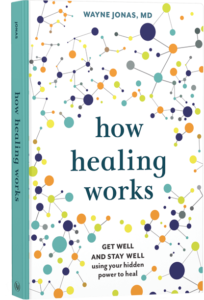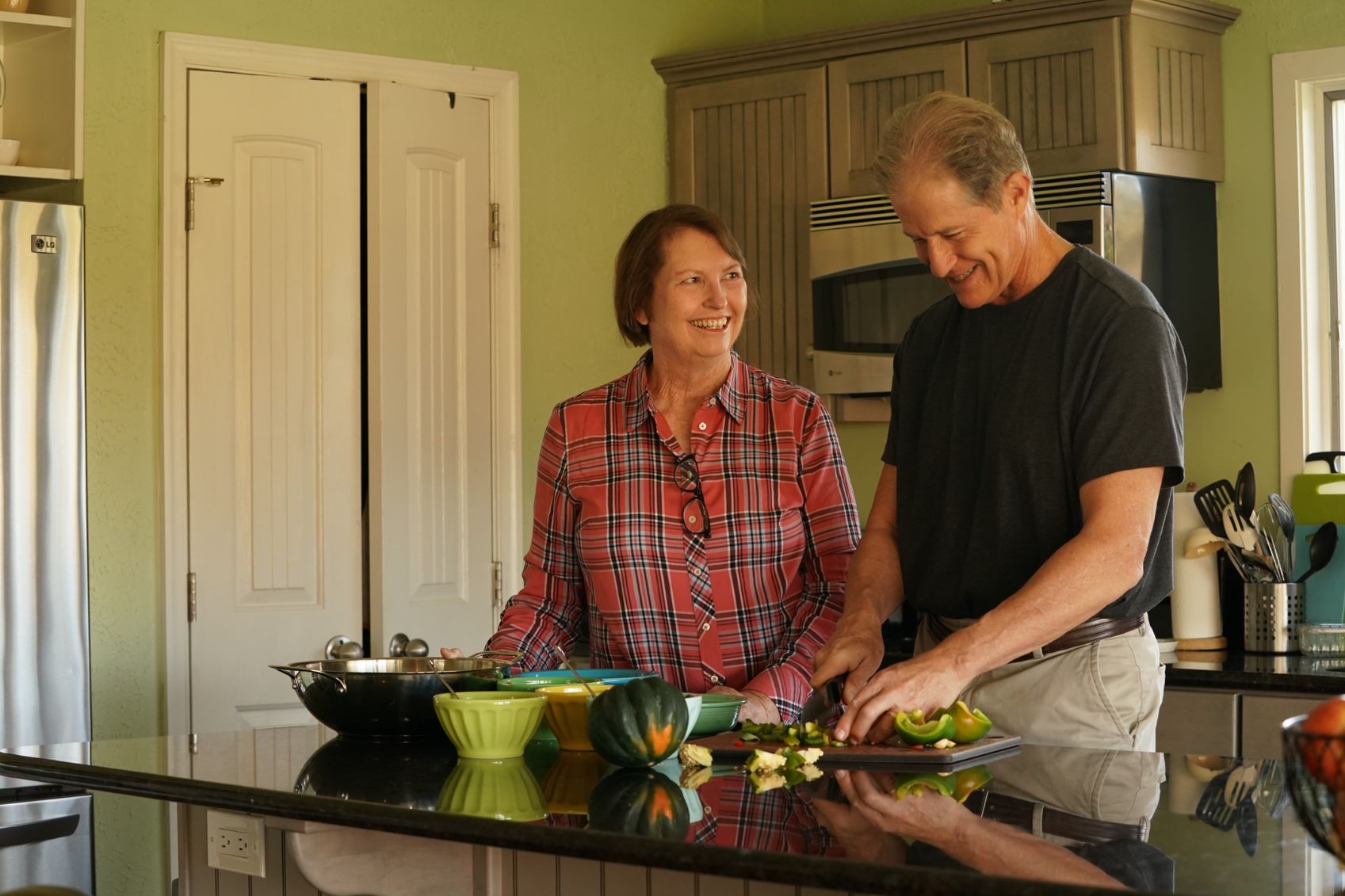It has been scientifically proven that our physical and emotional presence influences the healing of other human beings—it’s a phenomenon that is as fascinating as it is beautiful.
The following excerpt is from my book, How Healing Works, and describes the role a “healing presence” can play in the recovery, or maintenance, of one’s health. It features my wife Susan’s experience in the treatment of her cancer and how my own research found its way to help us through her healing process.
The first time my wife, Susan, went through chemotherapy, she did it largely alone. I was so busy with my job in the military that I often could not be present for her. Like many doctors, I hated feeling helpless, so I was compelled to take action, even when there was no good evidence that any action would help. I didn’t know how to feel comfortable just being with Susan. It felt like I lost my power and control. So I worked. She found a supportive network to help her through, seeking strength in her spiritual life and the need to care for our young children. She did well.
When she started chemotherapy for cancer the second time around, I told her that this time I would be there—that we were in this together. She believed me and appreciated it, but realized how difficult it would be for me. She also knew that my periodic presence was not enough support for what she was about to go through. After all, she pointed out, I was running a large research organization, had to continue doing my job for our income, and had many demands on my time.
Because of that, Susan reached out and gathered helpers around her: her daughters, my sister, her sister, her mother, her sisters-in-law, other family members, and friends. Her goal was to take care of herself and help take care of our new grandchild. I didn’t realize that she needed more than psychological support from me; she needed my physical presence—with my emotional body.
There are additional ways in which physical presence influences healing. We know, for example, that electromagnetic waves in the form of heat and infrared radiation emanate from the body, especially the hands. Through meditation, biofeedback, and breathing techniques, people can increase or decrease the amount of this heat and infrared radiation. Infrared radiation, especially in the frequencies of 400 to 800 nanometers, is absorbed by a chemical in our cells called cytochrome c. Stimulation of cytochrome c increases the amount of adenosine triphosphate (ATP)—the energy-producing molecule found in all cells.
In dozens of experiments done at Walter Reed Army Institute of Research, investigators found that individuals who put their hands around test tubes containing immune cells while meditating increased the amount of infrared radiation emanating from their hands, which stimulated the immune cells to produce more ATP and energy. After this exposure those cells were more resilient—that is, they survived better when hit with stresses such as heat and chemical shocks.
Remarkably, the kind of meditation and visualization that was the most effective for increasing the amount of ATP and resilience of these cells looked like love. Cultivating a feeling of love—such as gratitude, affection, and appreciation—produced the greatest effect. Mental activity such as counting backward or thinking about the weather did not increase ATP or improve cellular resilience.

I knew all this research—had even done some of it—but for some reason I didn’t think it was relevant for helping Susan heal. Scientists (including me) are generally skeptical of any research purporting to objectively measure and explain emotional and social interaction or the energy it creates. The area is considered too intangible and subjective to be reliable, so it is dismissed without looking at whether the research is rigorous or relevant. My skeptical doctor side had also dismissed it as an interesting laboratory finding but not relevant for patient care.
I wanted something more doable—a medication, supplement, or behavior. I wasn’t going to simply wave my hands over her head or take naps with her. What good would that do, I thought? So even as Susan began to lose energy and feel poorly from the chemo infusions, week after week, I didn’t think my presence could really make a difference in how she did.
Then one week I went away on a boating trip through the Grand Canyon with our daughter. We were off the grid for a while, and I was not with Susan for more than a week. When we got back within cell phone range, I received a call from her. While I was away, her white counts had dropped precipitously and she had developed a fever. The oncologist had given her a shot to boost her white blood counts and put her on antibiotics. If it persisted, she would be hospitalized and isolated.
I came home, fearful that this drop in white blood count was likely to recur the following week, because the effects of chemotherapy tend to be cumulative. But something about just being together started to make her feel better.
Then I remembered the research at Walter Reed. Still skeptical, I decided to try a little of this laying on of hands— this healing presence process—myself. I recalled from the research that the technique that affected the immune cells most powerfully involved breathing, imagining a soft white light filled with love being transmitted through the top of my head, down through my arms and hands, and out into her body. After a few minutes of trying this, I could feel the warmth coming into my hands from increased blood flow and heat. Susan also said that she could feel something—and then she fell asleep. The session lasted about fifteen minutes.
The next day her energy was much improved—she was up early and out pulling weeds in the garden, something she had not done for months. Was it from more ATP, I wondered? At her next chemotherapy session two days later, her white blood count had recovered practically back to normal—so she did not need the immune-boosting shot. Were her white blood cells more resistant to the chemo? She was clearly less fatigued, slept less, and was more active during the day. I was stunned. Had the simple physical presence of another loving person produced this response? I decided not to go on any more trips for a while. From then on, my job was to just make sure my body—in all its physical, social, and emotional dimensions—was around.
To learn more about the effects of isolation and loneliness, and the impact emotional connections can have on our health read last week’s blog post, How Emotional Connections Can Help You Heal. And, of course, to read more about this topic and all of integrative health, check out my book, How Healing Works.

Your Health Into Your Own Hands
Drawing on 40 years of research and patient care, Dr. Wayne Jonas explains how 80 percent of healing occurs organically and how to activate the healing process.

